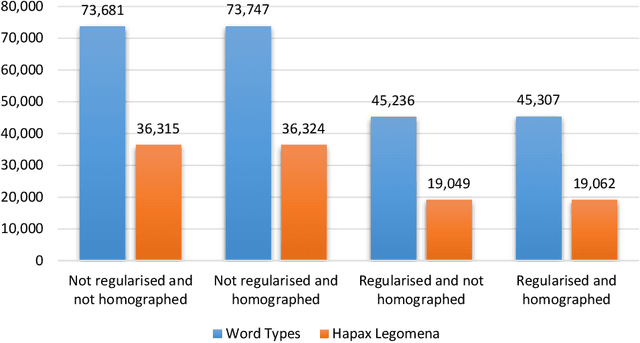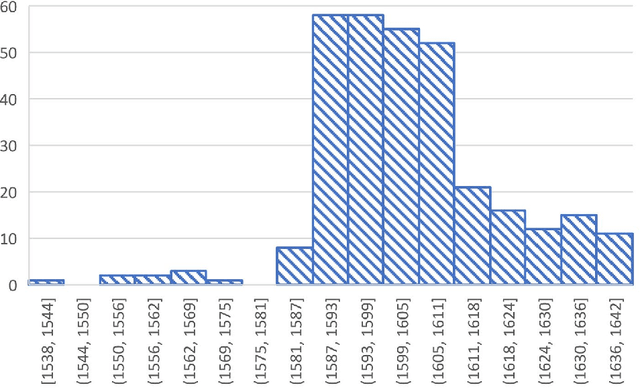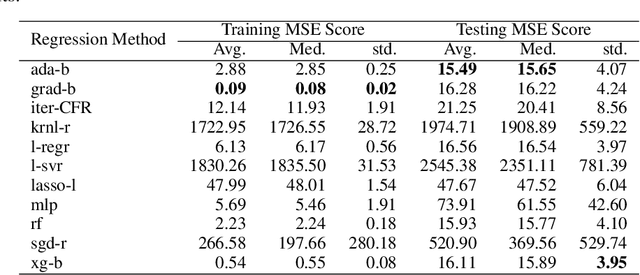Gabriel Egan
Multiple regression techniques for modeling dates of first performances of Shakespeare-era plays
Apr 14, 2021



Abstract:The date of the first performance of a play of Shakespeare's time must usually be guessed with reference to multiple indirect external sources, or to some aspect of the content or style of the play. Identifying these dates is important to literary history and to accounts of developing authorial styles, such as Shakespeare's. In this study, we took a set of Shakespeare-era plays (181 plays from the period 1585--1610), added the best-guess dates for them from a standard reference work as metadata, and calculated a set of probabilities of individual words in these samples. We applied 11 regression methods to predict the dates of the plays at an 80/20 training/test split. We withdrew one play at a time, used the best-guess date metadata with the probabilities and weightings to infer its date, and thus built a model of date-probabilities interaction. We introduced a memetic algorithm-based Continued Fraction Regression (CFR) which delivered models using a small number of variables, leading to an interpretable model and reduced dimensionality. An in-depth analysis of the most commonly occurring 20 words in the CFR models in 100 independent runs helps explain the trends in linguistic and stylistic terms. The analysis with the subset of words revealed an interesting correlation of signature words with the Shakespeare-era play's genre.
Stylometric Analysis of Early Modern Period English Plays
Aug 03, 2017



Abstract:Function word adjacency networks (WANs) are used to study the authorship of plays from the Early Modern English period. In these networks, nodes are function words and directed edges between two nodes represent the relative frequency of directed co-appearance of the two words. For every analyzed play, a WAN is constructed and these are aggregated to generate author profile networks. We first study the similarity of writing styles between Early English playwrights by comparing the profile WANs. The accuracy of using WANs for authorship attribution is then demonstrated by attributing known plays among six popular playwrights. Moreover, the WAN method is shown to outperform other frequency-based methods on attributing Early English plays. In addition, WANs are shown to be reliable classifiers even when attributing collaborative plays. For several plays of disputed co-authorship, a deeper analysis is performed by attributing every act and scene separately, in which we both corroborate existing breakdowns and provide evidence of new assignments.
 Add to Chrome
Add to Chrome Add to Firefox
Add to Firefox Add to Edge
Add to Edge